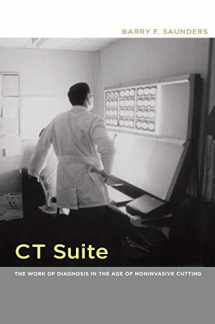
CT Suite: The Work of Diagnosis in the Age of Noninvasive Cutting
Book details
Summary
Description
In CT Suite the doctor and anthropologist Barry F. Saunders provides an ethnographic account of how a particular diagnostic technology, the computed tomographic (CT) scanner, shapes social relations and intellectual activities in and beyond the CT suite, the unit within the diagnostic radiology department of a large teaching hospital where CT images are made and interpreted. Focusing on how expertise is performed and how CT images are made into diagnostic evidence, he concentrates not on the function of CT images for patients but on the function of the images for medical professionals going about their routines. Yet Saunders offers more than insider ethnography. He links diagnostic work to practices and conventions from outside medicine and from earlier historical moments. In dialogue with science and technology studies, he makes a significant contribution to scholarship on the visual cultures of medicine.
Saunders’s analyses are informed by strands of cultural history and theory including art historical critiques of realist representation, Walter Benjamin’s concerns about violence in “mechanical reproduction,” and tropes of detective fiction such as intrigue, the case, and the culprit. Saunders analyzes the diagnostic “gaze” of medical personnel reading images at the viewbox, the two-dimensional images or slices of the human body rendered by the scanner, methods of archiving images, and the use of scans as pedagogical tools in clinical conferences. Bringing cloistered diagnostic practices into public view, he reveals the customs and the social and professional hierarchies that are formulated and negotiated around the weighty presence of the CT scanner. At the same time, by returning throughout to the nineteenth-century ideas of detection and scientific authority that inform contemporary medical diagnosis, Saunders highlights the specters of the past in what appears to be a preeminently modern machine.


We would LOVE it if you could help us and other readers by reviewing the book
Book review




